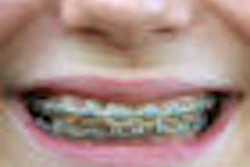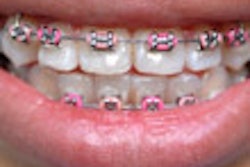When it comes to the attractiveness of orthodontic braces, less metal is better, according to a survey published in the American Journal of Orthodontics and Dentofacial Orthopedics (April 2008, Vol. 133:4, pp. S68-S78).
The study of the public's attitude about the attractiveness of various styles of braces indicates that the types of dental appliances with no visible metal were considered the most attractive. Braces that combine clear ceramic brackets with thin metal or clear wires were a less desirable option, and braces with metal brackets and metal wires were rated as the least aesthetic combination.
"The paradox is that the more aesthetic these dental appliances are, the more difficult they are to manage for the orthodontist," said senior study author Henry Fields, D.D.S., M.S., M.S.D., professor and division chair of orthodontics at Ohio State University. "But those are what people like the most."
Dr. Fields and colleagues questioned 200 adults using a computer-based survey that presented standardized images of teeth with various orthodontic appliances. Adults make up about one in four patients being fitted with braces, Dr. Fields said. And adults may be more concerned about aesthetics of braces than are adolescents, who, if they require braces, typically get them between the ages of 10 and 13.
Respondents were asked to rate the appliances using a range from "extremely unattractive" to "extremely attractive" on a scale of 1 to 100. The responses fell into three clear categories: stainless steel appliances were considered the least attractive, with average ratings hovering between about 25 and 40 on the 100-point scale; ceramic appliances, which are often clear or tooth-colored and less visible than metal, received average ratings of between about 55 and 70 on the scale; and clear tooth trays and teeth with no visible appliances ranked as the most attractive, with the average of most scores exceeding 90.



















